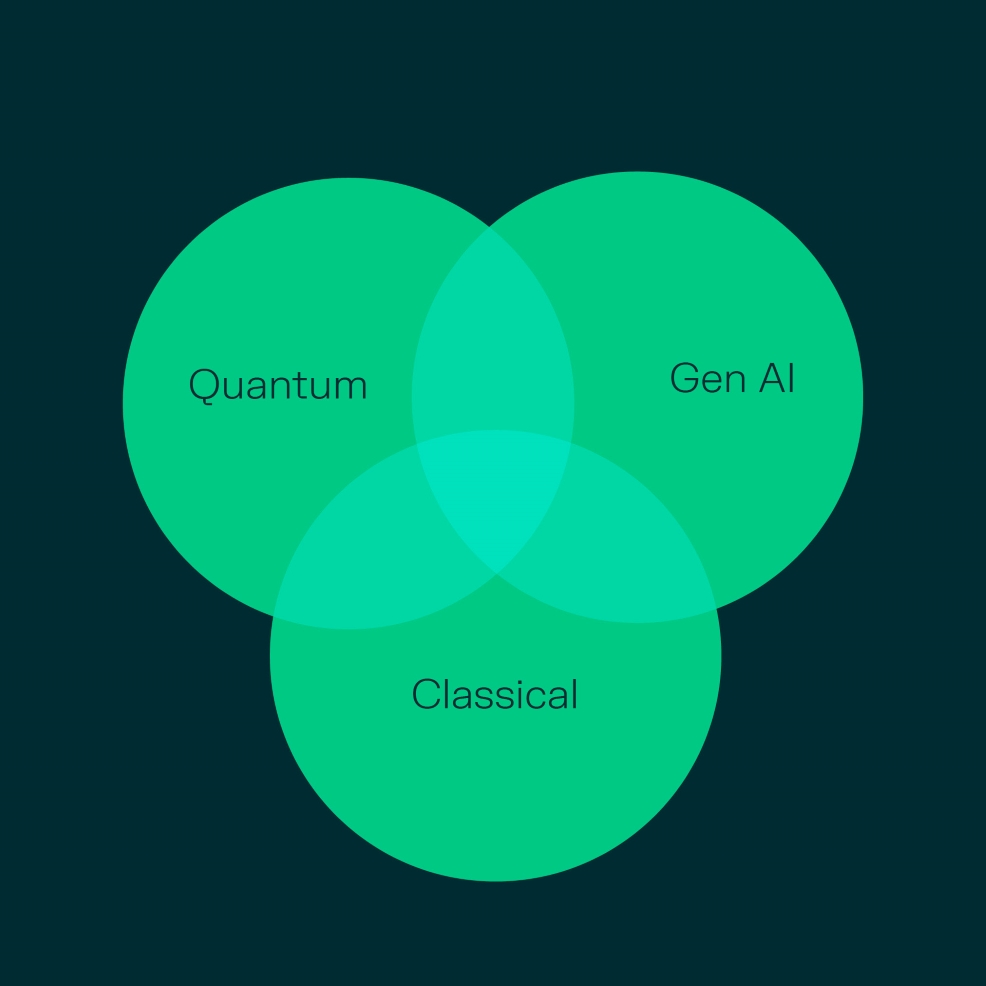Are you ready to harness the power of Quantum AI? This essential guide provides a clear and concise overview of the technology, its applications, and its impact on industries. Equip yourself with the knowledge to drive innovation and gain a competitive edge.
Quantum AI is on its way to revolutionizing industries by unlocking computational power beyond the reach of modern traditional computers. By combining the parallel processing capabilities of quantum computing with the predictive power of AI, businesses can solve complex problems faster and more efficiently than ever before. From accelerating drug discovery and optimizing supply chains to transforming financial modeling and materials science, quantum AI has the potential to redefine how we approach innovation and prepare for future challenges. For forward-thinking leaders, understanding and harnessing this technology will be key to gaining a competitive edge in an increasingly data-driven world.
What exactly is Quantum AI?
In short, Quantum AI uses quantum computing to enhance machine learning algorithms, to create more powerful AI models. By utilizing the computational superiority of quantum systems, Quantum AI can achieve results beyond the capability of classical computers, solving complex problems faster and more efficiently.
To understand the importance of Quantum AI it’s crucial to revisit the concepts of classical computing, quantum computing, and machine learning.
A Brief History of Classical Computers
Classical computers are based on classical physics and use bits to represent data as either 0 or 1, processing information bit by bit sequentially. Bits power all classical computing devices, including laptops, servers, smartphones, and supercomputers. In a computer, bits are stored in tiny, inexpensive electromechanical devices called transistors, which reliably accept, store, and return a 0 or 1 as long as the power remains on. Early computers used individual transistors, carefully arranged for optimal performance. In the 1960s, the development of the integrated circuit (IC), which combined multiple transistors on a single chip, became the foundation of the modern digital era. The IC enabled the creation of the microprocessor, the most important component in today’s classical computers.
A Brief History of Quantum Computers
Quantum computers (QCs) harness the principles of quantum physics instead of classical physics. Rather than relying on bits representing 0 or 1, QCs use quantum bits (qubits), which can exist simultaneously in multiple states due to superposition and entanglement phenomena. These properties allow quantum computers to process vast amounts of data in parallel, giving them the potential to solve complex problems, such as optimization and molecular simulations, far more efficiently than classical computers.
Quantum computing research began in the early 1980s, inspired by Richard Feynman’s lectures, who theorized that quantum systems could simulate nature in ways classical computers never could.
Although industry-ready quantum computers are in their early stages, they are progressing rapidly, with significant milestones achieved in recent years and breakthroughs in optimization, cryptography, and AI that classical computers struggle to address. QCs will significantly influence industries such as finance, pharmaceuticals, and logistics.
Classical AI — The fruit of classical computers
Classical AI is the direct result of advancements in classical computing. The most significant enabler of these advancements is the microprocessor, which has benefited greatly from Moore’s Law—the observation that the number of transistors on a chip doubles approximately every two years, leading to exponential increases in computational power. As a result, the speed and efficiency of microprocessors have dramatically improved over the past six decades, enabling breakthroughs across various fields, including artificial intelligence (AI) and machine learning (ML).
Specialized processors called graphic processing units (GPUs) originally popularized for computer games often handle the grunt work of AI and ML at high speed; interestingly, even GPUs are overtaxed by the ambitions of today’s AI and ML programs.
AI and ML are likely to be among the main beneficiaries of quantum computing as it matures.
The Limitations of Classical Computing Calls for an Alternative
Now that we’ve explored the foundational concepts, it’s clear that classical computing has limitations. Two key factors highlight why a shift to quantum computing is crucial for driving future innovation:
- Physical Limitations of Classical Computers
The death of Moore’s law: Microchip performance is not increasing at the same rate as it used to. In terms of ready computational power, classical computing is slowly running out of headroom. As chips become smaller, classical computing encounters physical constraints that hinder further performance gains. This limitation stems, ironically, from quantum effects: as transistors shrink, electrons exhibit wave-like behavior, leading to quantum tunneling. The tunneling can randomly switch a bit between 0 and 1 which renders these deterministic devices inaccurate to determine anything. - The computational limitations of Classical Computers are not ideal for complex problems:
The explosion of complex data and optimization challenges: As datasets grow exponentially in size and complexity—especially in areas like big data analytics, AI, and genomics—classical systems fall short due to their inability to process and optimize this data. Many optimization problems, such as training deep neural networks or analyzing high-dimensional data, scale poorly with classical computing.
Quantum computers, with their ability to exploit quantum phenomena like superposition and entanglement, offer a fundamentally different approach to computation. By processing multiple possibilities simultaneously, quantum computers can potentially solve specific problems exponentially faster than classical computers. This computational advantage makes them a promising candidate for addressing the limitations of classical systems and accelerating progress in fields like machine learning.

Quantum AI Whitepaper
Delve deeper into this technology and explore how quantum computing, classical computing, and artificial intelligence work together as complementary pillars of modern computation. Download our in-depth white paper, “Quantum Computing, Classical Computing, and Artificial Intelligence as Three Complementary Pillars of Computation.” Dive deeper into the future of technology by accessing the full report now!
Quantum-AI-enhanced solutions for real-world problems
Quantum computing, while incredibly promising, is still in its early stages; achieving quantum advantage involves demonstrating significant speedup or performance improvement for specific tasks. Rather than a temporary solution for today’s limitations, Quantum-AI hybridization offers a powerful and enduring path forward, both for the present and the future.
By combining the unique strengths of quantum computing, High-Performance Classical Computing (HPC), and AI, we can more effectively tackle complex problems across multiple domains. This trinity of technologies provides a long-term, synergistic approach, where each component complements and enhances the others, allowing for more efficient and scalable solutions.
The Trinity of Quantum Computing, HPC, and AI — The Current Strategy
The real game-changer comes when we integrate quantum computing, High-Performance Classical Computing (HPC), and AI into a unified approach to solving complex problems. Here’s how the synergy works:
- Quantum Computing brings a new level of computational power to address specialized tasks—like solving optimization problems or simulating quantum systems—that classical computers can’t handle efficiently.
- HPC steps in where quantum computers currently lack robustness. After quantum systems perform their specialized calculations, HPC systems take over the heavy lifting, running traditional algorithms to analyze the quantum data and refine the results. HPCs serve as the bridge that ensures quantum results are transformed into actionable insights.
- AI doesn’t just assist in this process; it plays an increasingly independent role, providing intelligent algorithms that solve specific tasks on their own while also enhancing both quantum and classical systems. AI improves the efficiency of quantum calculations, optimizes classical simulations, and refines data analysis, making the entire workflow more effective and precise.
In the short term, this synergy between Quantum Computing, HPC, and AI allows for hybrid problem-solving in several industries, to name a few:
- Drug discovery: Quantum computers can model complex molecular interactions that classical systems can’t handle. AI helps refine these models and HPC processes the large-scale data to test the effectiveness (or toxicity) of different compounds.
- Supply chains and logistics: In problems like supply chain management or logistics, quantum systems generate possible solutions to highly complex optimization problems, while HPC and AI algorithms evaluate and refine these solutions, ensuring they are practical and ready for deployment.
- In financial modeling, quantum computers can quickly generate optimal strategies by solving massive optimization problems, while AI models help analyze market data, and HPC processes real-time financial datasets to adapt strategies on the fly.
The beauty of adopting a quantum-enhanced hybrid approach lies in its practicality and immediate impact. While researchers and quantum experts (and Pasqal, of course) are working on the technology of QC to mature and reach quantum advantage across industries we can solve real-world challenges with this powerful strategy. From accelerating drug discovery to optimizing financial strategies and solving complex logistical problems, the synergy between these technologies is already proving transformative.
You can read some of the success stories of Pasqal’s customers, who are already on their journey to Quantum leadership in their fields: Energy sector (EDF) & Financial sector (Crédit Agricole CIB).
Quantum for AI and AI for Quantum — A Mutual Enhancement
Integrating quantum computing with classical systems and AI today offers a key advantage: each technology complements the other. Quantum systems, with their unparalleled ability to handle complex computations, will empower AI to tackle problems currently out of reach for classical systems. In turn, AI’s role in optimizing quantum algorithms and making them more efficient supports the advancement of quantum technologies. This mutual enhancement, the “dance” between quantum and AI, highlights the importance of Quantum for AI and AI for Quantum and points to a future where Quantum AI becomes the ultimate computational paradigm.
What does this mean for your business?
For businesses and industries, investing in quantum-enhanced solutions today is about preparing for a future competitive edge. While quantum computing is still developing, companies that adopt Quantum AI early are positioning themselves for long-term success as this technology matures.
The bottom line
The message is clear: investing in quantum technologies today is essential for businesses to remain at the forefront of innovation. As the trinity of quantum computing, AI, and HPC continues to evolve, those already integrating these technologies will be positioned to lead their industries into the future. By understanding and embracing this evolution, companies not only solve present-day challenges but also help shape the future of Quantum AI, ensuring they are ready for the breakthrough as this technology emerges. The future is Quantum AI, and the time to invest in it is now.
The easiest way to start is with the help of experts. Start your quantum journey with Quantum Quest (exclusively through this post before the official launch; wink), our new learning platform, and explore the potential of neutral atoms quantum computing. Experience a quantum processor in action, learn how to run algorithms on it, and how to apply them to your business.
